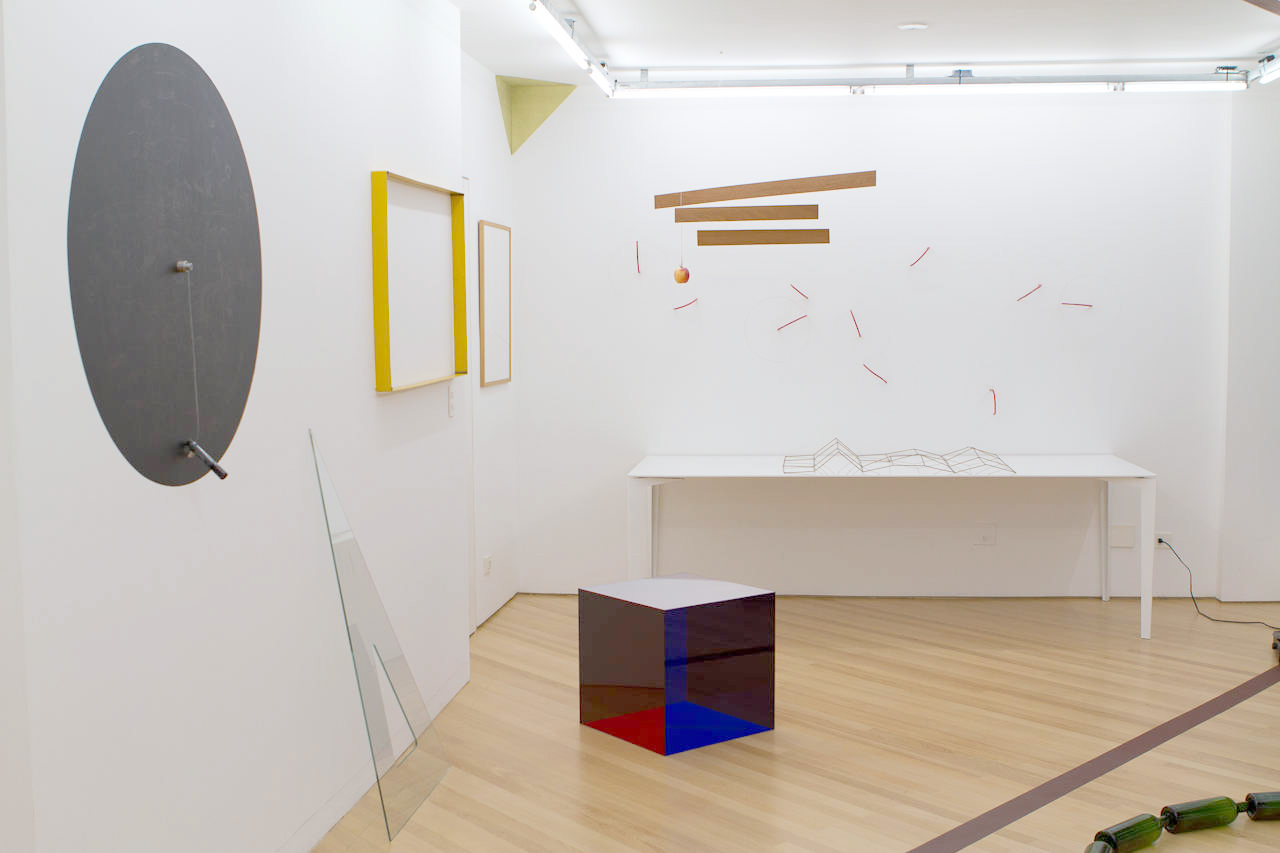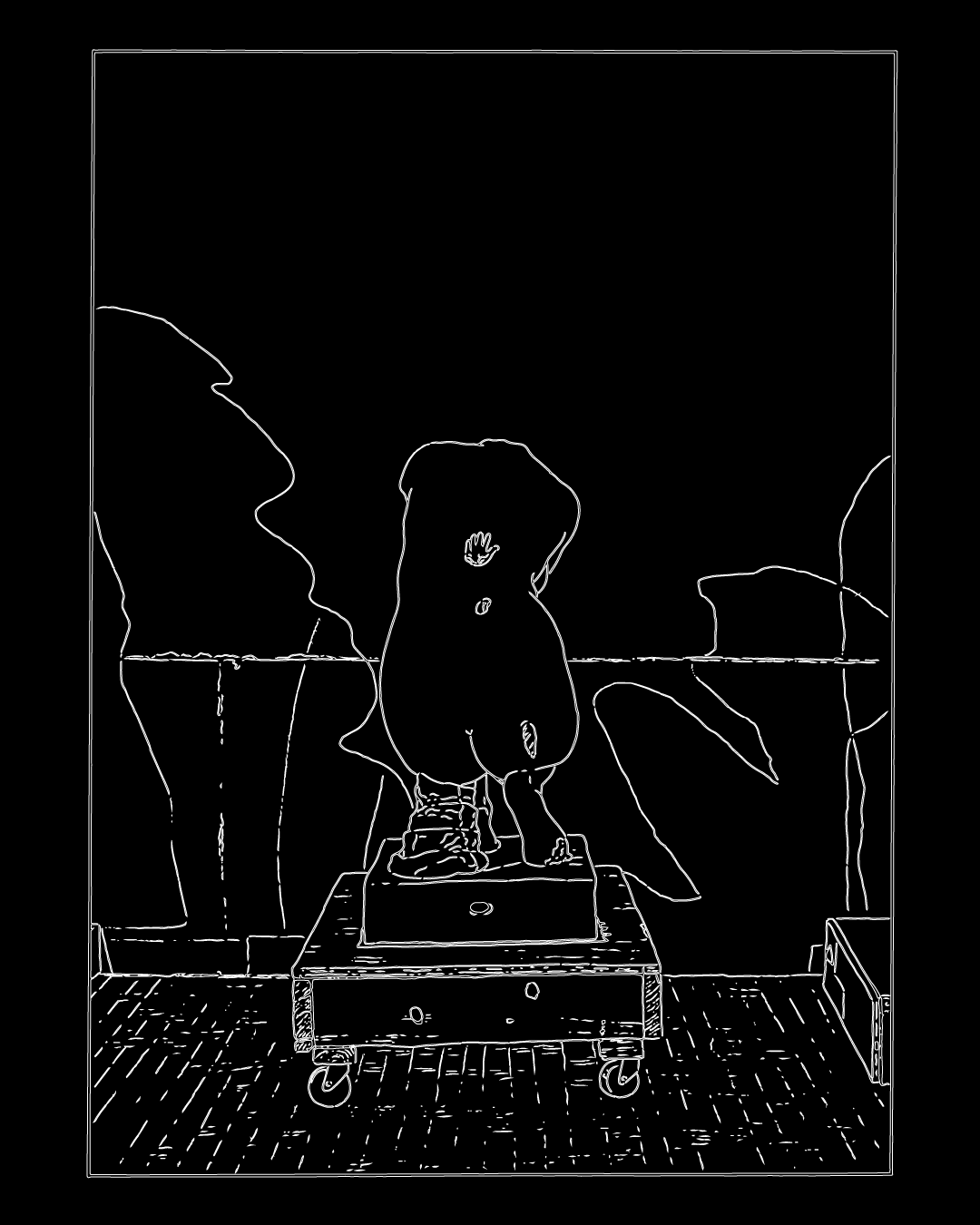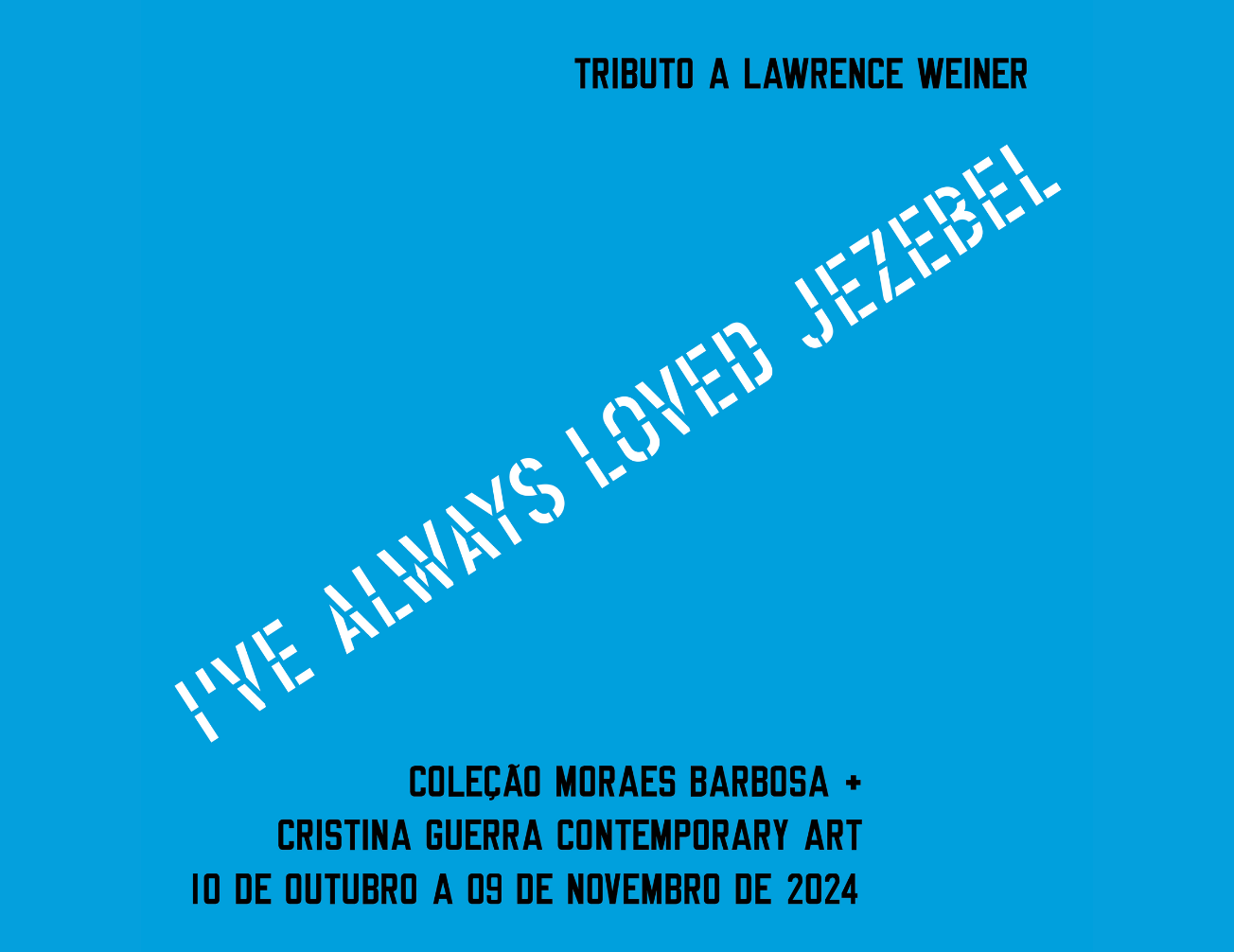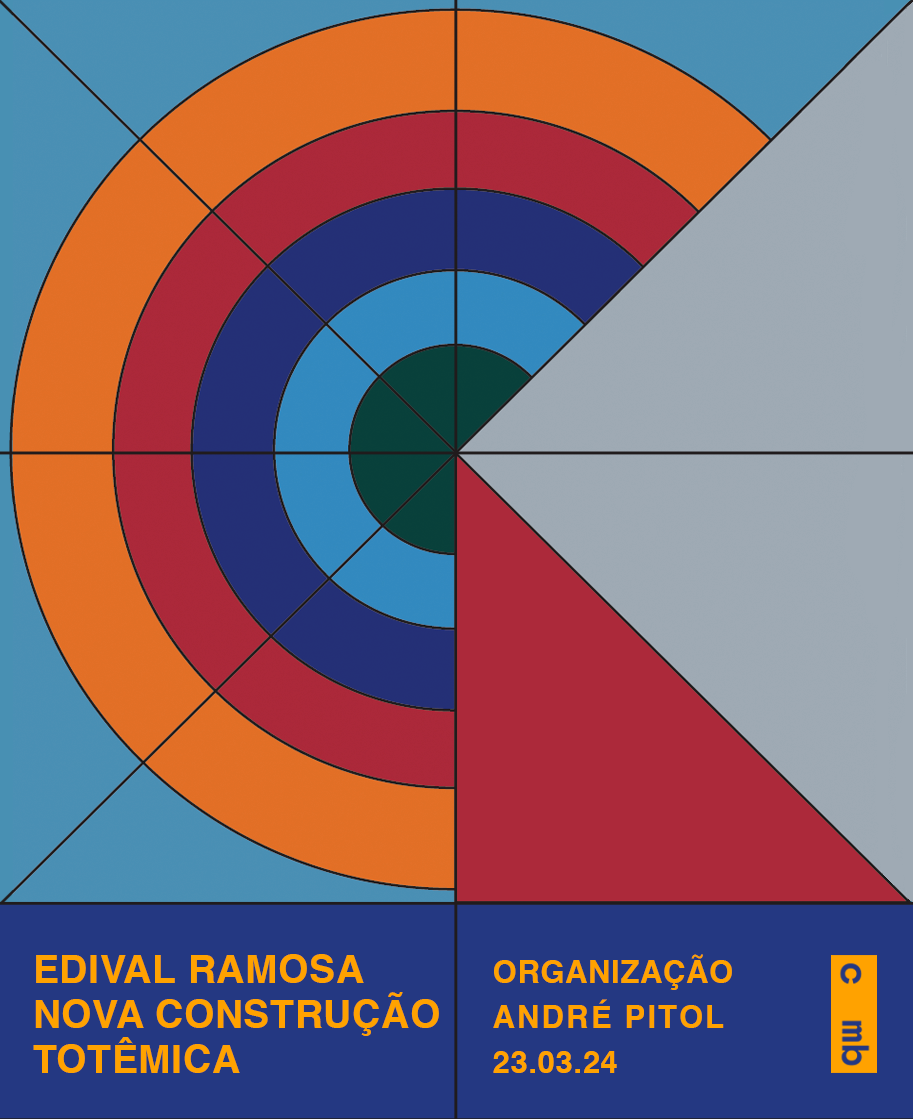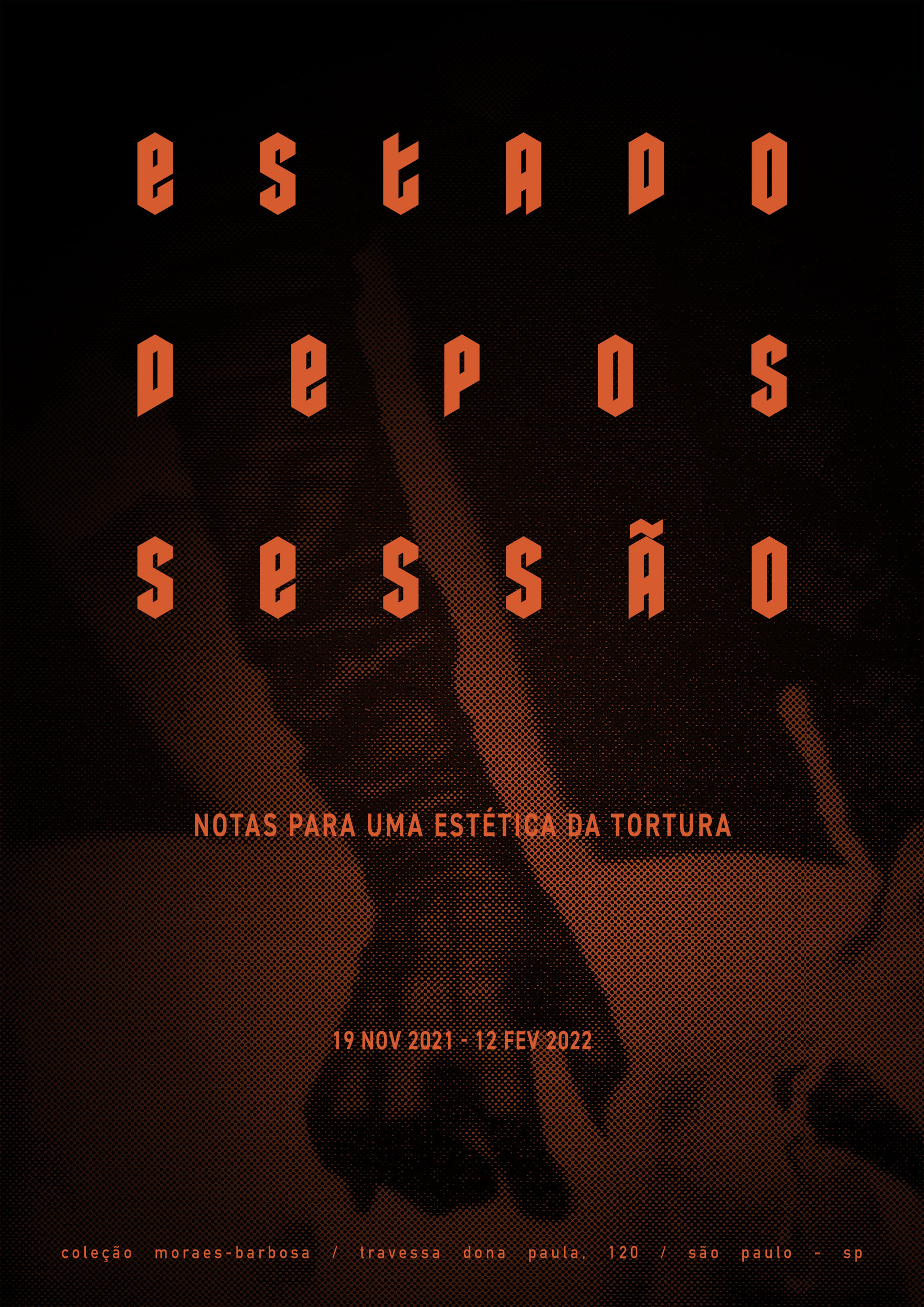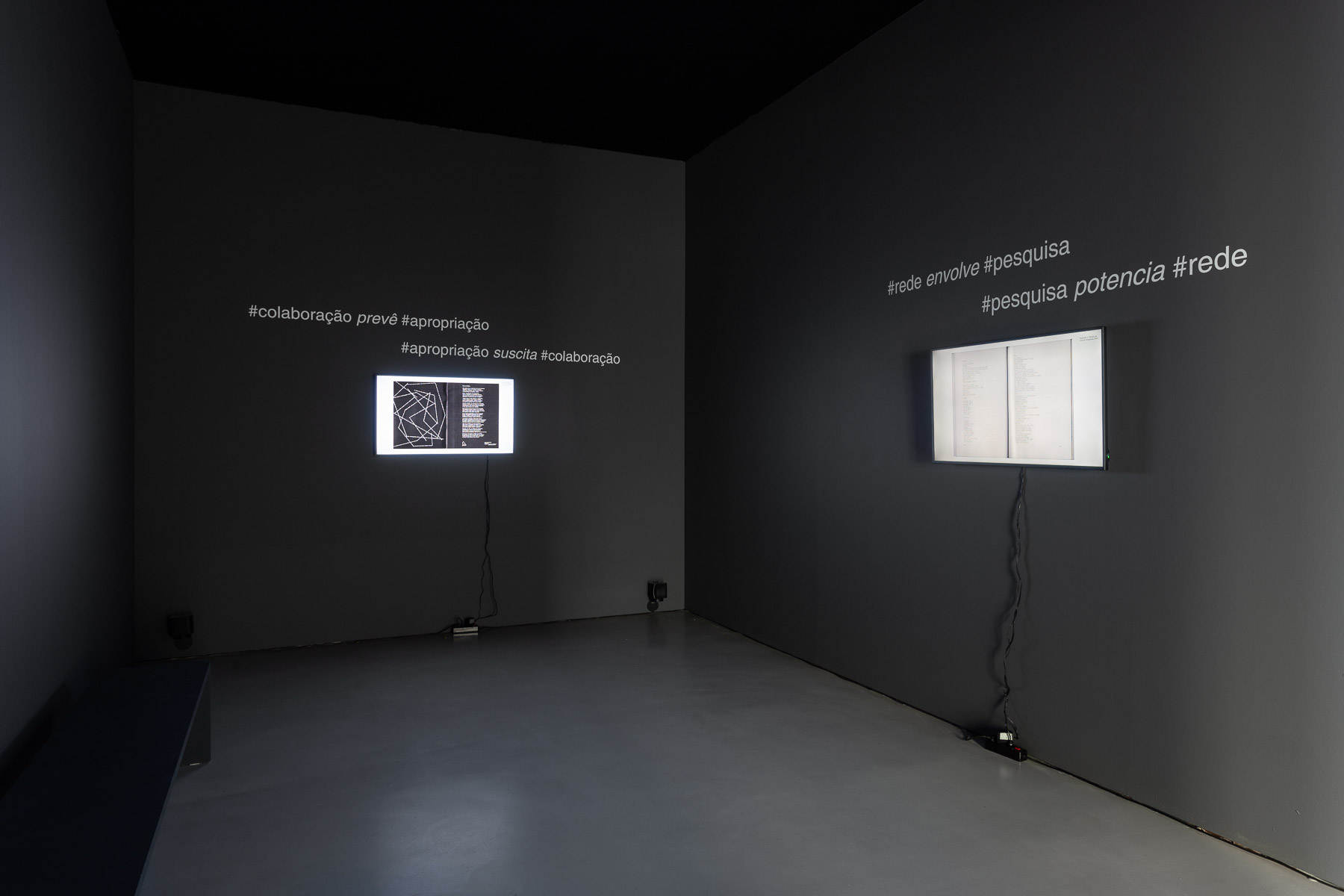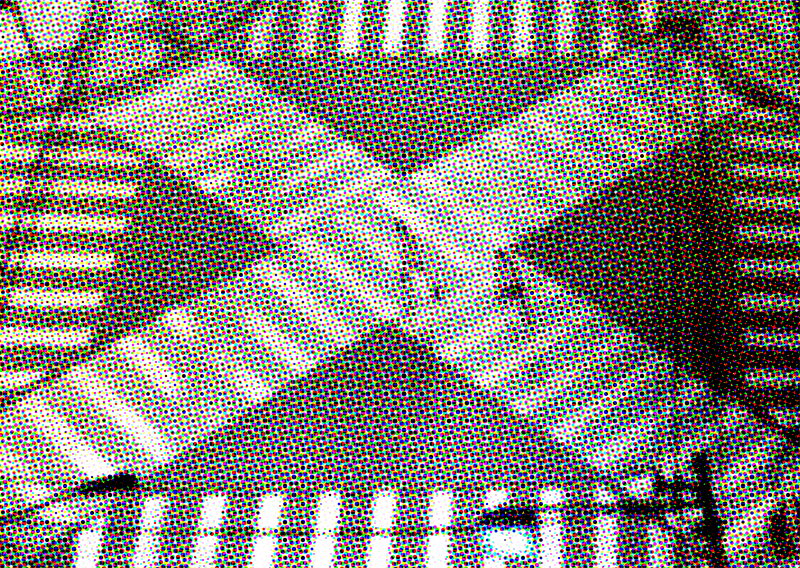Exhibitions
Since 2012, cmb has held exhibitions based on pieces from its collection and the current artistic production. “Geometries” opened the collection's first exhibition space and featured a curatorial text by Paulo Miyada. The same location, an apartment in the Pinheiros neighborhood, in São Paulo, also housed artistic residencies for professionals from outside Brazil.
In the following years, exhibitions have addressed the conceptual experimentalism of the 60s and 70s, feminism of the 80s, and contemporary Latin American production, prioritizing printed, audiovisual, and ephemeral materials, in addition to performances and hybrid practices.
In November 2021, cmb inaugurated its new space in a Vila Operária on Travessa Dona Paula, in São Paulo.
Nightfall
Aziz Hazara
curated by Leonardo Bigazzi
August 30th to december 20th
Nightfall, Aziz Hazara’s first solo exhibition in Latin America, presents a series of works that draw on the material and psychological aftermath of decades of foreign occupation, cultural erasure and economic subjugation in Afghanistan. In his work, Hazara reveals a darkness that is not a setting but a condition.
A site of constant frictions and negotiations, where silence and noise, presence and disappearance, become strategies for navigating contested landscapes.
photograph of photograph of photographs of photographs or
she wanted to know more about this
org. with Pontogor e Joaquim Pedro
March 29th to June 29th
This exhibition presents to the public works by the North-American artist Louise Lawler and Brazilian photographer Mauro Restiffe. This selection is displayed in the space of the moraes-barbosa collection, opening dialogues and paths for reflection on two main axes: photography as a medium, beginning and end – or an idea of capturing and/or creating images – and also the recording of works by other artists, characterizing appropriation.
The moraes-barbosa collection occupies its space so that the "gaps" between the images (within the images) are open possibilities for questioning new perspectives, from what has already been observed and re-observed by these two artists with distinct perspectives and careers, who meet in dialogue in this exhibition.
Dial-A-Poem
Brasil
curated by: Marcela Vieira
January-March 2025
coleção moraes-barbosa presents the Brazilian version of Dial-A-Poem, one of John Giorno's most internationally renowned works. Curated by Marcela Vieira, the project brings together readings by 54 Brazilian poets, artists, researchers and writers. The focus of the curation and, consequently, the selection of guests, sought to investigate how contemporary voices from different origins, influences, regions, generations and styles imagine and reinvent a theme dear to Giorno, eroticism – and, by extension, language and sound performance.
Sit In My Heart And Smile
curated by: Marcela Vieira
January-March 2025
Titled after one of John Giorno's works, the exhibition traces the journey of the word across various supports in Giorno's practice, including print formats, spoken word, sound poetry, performance, LP recordings, telephones, stickers, and other accessories. SIT IN MY HEART AND SMILE introduces Giorno's work to the Brazilian audience for the first time, featuring excerpts from interviews that contextualize the poet's artistic environment in 1960s New York, his peers, his activist stance, and his reflections on the experimentation of the word across diverse media.
I’ve Always Loved Jezebel
org.: Thiago Tannous, Pontogor & Joaquim Pedro.
october 10th to november 9th - 2024
Common interpretations often describe Jezebel as the queen who dominates her husband, persuading him to do evil. These interpretations have been reassessed over time. Reflecting on the character, Lawrence Weiner did not align himself with simplistic views. He preferred to emphasize the ambiguity and possible divergences between subjective interpretations.
Until We Became Fire and Fire Us
organized by Basel Abbas & Ruanne Abou-Rahme
Sept. 5th - Dec. 12th, 2024
The project is a mixed media installation with multiple channel sound and video. It formally explores the idea of hauntings in its aural and visual content and the way in which this material appears and disappears into a given space. Sometimes appearing as poetry from a dissonant voice, a broken melody or intense flashes of text and video, or an imprint from a forbidden land, a forbidden love.
the distance between you and stanley brouwn each time you remember this sentence_zdb
org. deyson gilbert
opening september 2nd 2023, 11 a.m. to 7 p.m.
perhaps the first point would be to avoid a possible mistake: that of granting to the brouwnian invisibility a certain impervious body contour
as if its negativity could fatally carve in the air the bone of a transfigured aesthetic apparition
as if his image refusal should necessarily impose on our eyes the ignis fatuus of an aesthetic halo hypostasis
as if, by turning off the lights in a locked room full of live and dead cats, we could metaphysically scream, despite all the clotted blood:
yes! yes!
here all cats are brown!
s.a. talking about s.b. in an interview to d.g.
fill in according to your own conceptions
the graphic experience of tomma wember, paul wember and johannes cladders
curated by Tina Merz
June 15th to august 17th 2024
Between the 1960s and 70s, artists, curators and gallery owners experimented with different ways of doing an exhibition, often using resources from the graphic territory. The usual catalog-document procedure was replaced by the circulation of the work itself, projecting the museum outside its walls through a portable exhibition, which could circulate around the world. The work-catalogs act as an open structure that resituated art and its relationship with the public, which through additions or subtractions were transformed by the hands of those who once owned it.
EARTH-WORDS
Robert Smithson, Artforum 1966-73
org. Antônio Ewbank e
Wallace V. Masuko, 2013
Since 2012, cmb has held exhibitions based on pieces from its collection and the current artistic production. “Geometries” opened the collection's first exhibition space and featured a curatorial text by Paulo Miyada. The same location, an apartment in the Pinheiros neighborhood, in São Paulo, also housed artistic residencies for professionals from outside Brazil.
In the following years, exhibitions have addressed the conceptual experimentalism of the 60s and 70s, feminism of the 80s, and contemporary Latin American production, prioritizing printed, audiovisual, and ephemeral materials, in addition to performances and hybrid practices.
In November 2021, cmb inaugurated its new space in Vila Operária on Travessa Dona Paula, in São Paulo.
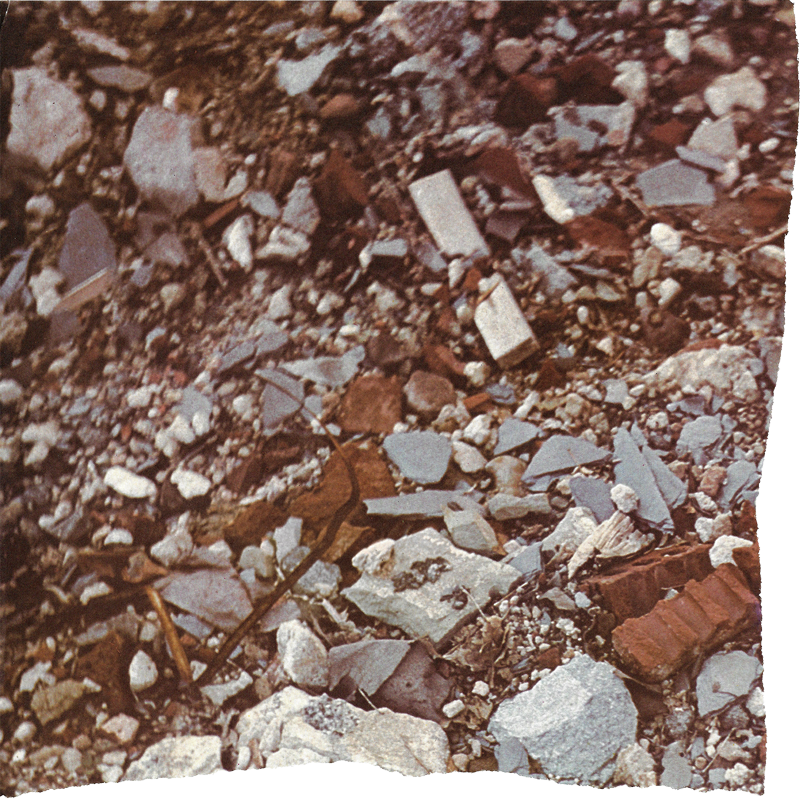
The Bargain
org. Khadyg Fares, 2022
The exhibition presents works whose common ground are clashes inherent to the asymmetry of forces, for agreements permeated by tension, in which images, memories, gestures and sounds are disputed. The gathered artworks and materials express power dynamics, repetitions and bargains, and bear marks of an internal and external colonialism.
4 videos by
Leslie Thornton
org. Cris Ambrosio, Deyson Gilbert, Frederico Filippi e Pontogor, 2022
A warp of voices, images, overlapping accounts and descriptions, ethical crossroads and scientific meditations appear in the production of American artist Leslie Thornton since its beginnings in the 1970s. This exhibition, whose title comes from the first film in the 'Peggy and Fred in Hell', covers works from different moments in Thornton's career and focuses on the experimental ‘There was an Unseen Cloud Moving’ (1988).
Horror Vacui
Pontogor (org.), 2022
The moraes-barbosa collection presents the exhibition Horror Vacui, organized by the artist and collection’s former fellowship holder. The exhition presents itself as an unfolding development of Pontogor’s research results in the collection’s archive, investigating the different renderings of emptiness in art.“The desire to see is thus diverted into an invitation to act; the relations between what and how is being represented coalesce in the production of a subjectivity in making.”**excerpt from the text 'The Blind Viewer' by Helena Vilalta.

Possession State: notes for an aesthetic of torture
Cris Ambrosio e Deyson Gilbert (org.), 2021
𝘧𝘰𝘳 𝘢 𝘥𝘦𝘧𝘪𝘯𝘪𝘵𝘪𝘰𝘯 𝘰𝘧 𝘵𝘩𝘦 𝘤𝘰𝘯𝘤𝘦𝘱𝘵 𝘰𝘧 𝘱𝘰𝘴𝘴𝘦𝘴𝘴𝘪𝘰𝘯:
In a strict sense, ideological drama established in the field of conscience by the conflict of one or more entities that claim, all at once, control over the same countenance. In a dilated form, a crossroaded category: a spiritual path of beings butchered by the historical and political blades of the territories, bodies, and symbols (demonology of weights, wills and the owned). In a direct puncture: misalliance and fractured conciliation between images, things, and inclinations. In essence: the exorcism of the eyes against the sweat of the hands and the drool of the assholes.
Networks, Collaborations, Resistance in/between Portugal and Brazil, 1962-1982
Rui Torres: Lisbon Municipal Galleries
By identifying analogous forms of expression that constitute common acts of resistance in Portugal and Brazil, albeit at different times and in dialogue with different communities, it is possible to observe a vital social intervention, promoting a poetic and political action, triggered by critical operations of reinvention of reading and writing, participation and production, freedom and resistance.
Reté
Camilo Godoy, 2018
Reté is the word ‘body’ in Tupi language. The Tupi lived in present-day São Paulo before Portuguese colonization. As part of SP-Arte, artist Camilo Godoy
presents an exhibition that brings together materials from coleção moraes-barbosa. Through thisproject, Godoy addresses the representation of the human body in dance and performance.
Trustworthy Agreement
Jacopo Crivelli + Olivia Ardui, 2017
From the concept of "agreement" - which in some cases becomes "contract", with its clauses and obligations and in others, an implicit and informal “pact” — the exhibition is configured as an invitation to reflect on power games and conflicts of interest, which have regulated society and, more specifically, the art system.
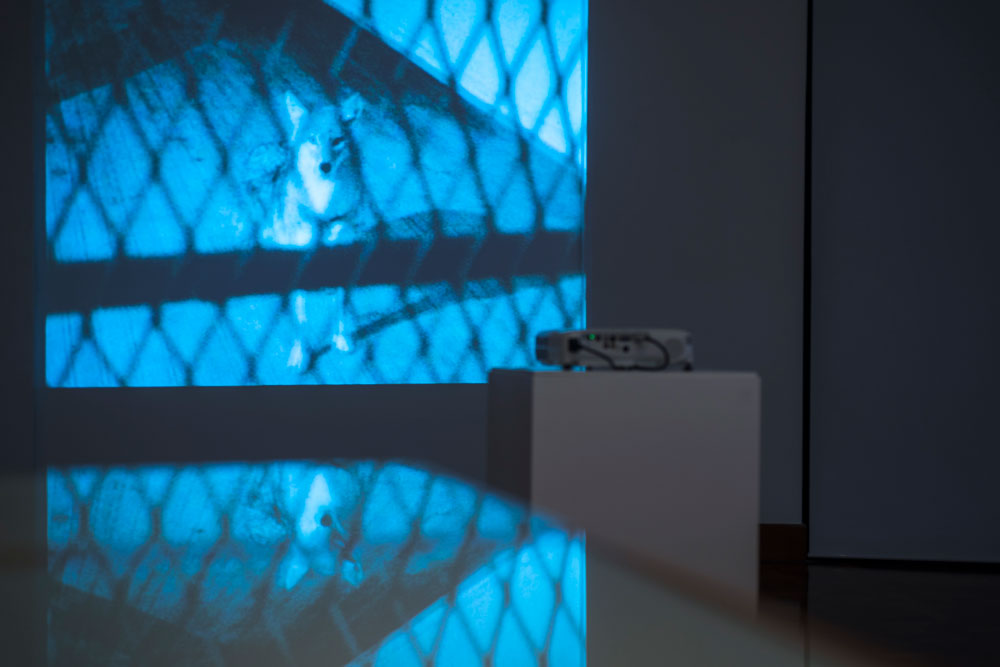
Still Guerrilling Girls:The Feminist Cause in Art Museums
Diana Dobránszky, 2016
In a seminal and inaugural text on feminist art theory written in 1971, American Linda Nochlin set some parameters for the question “Why Have There Been No Great Women Artists?” Among the various reasons given, Nochlin considers the restriction suffered by women in their artistic education and access to the means of production (and distribution) – it is impossible not to remember the notorious essay by English woman Virginia Woolf on the condition of the woman writer in her book “A Room of One's Own,” from 1929, in which she defends independence – and freedom – as a primordial need for artistic production and improvement.

Art as Project as Book
Diana Dobránszky, 2015
An important section of the moraes-barbosa collection consists of brochures, posters, artists’ books and vinyl albums of some of the most important conceptual artists of the 1960 and 70s. In order to provide access to a wider audience to this material the exhibition Art as Project as Book presents books, works and vinyls by Douglas Huebler, Lawrence Weiner, Robert Barry, Seth Siegelaub and stanley brouwn.
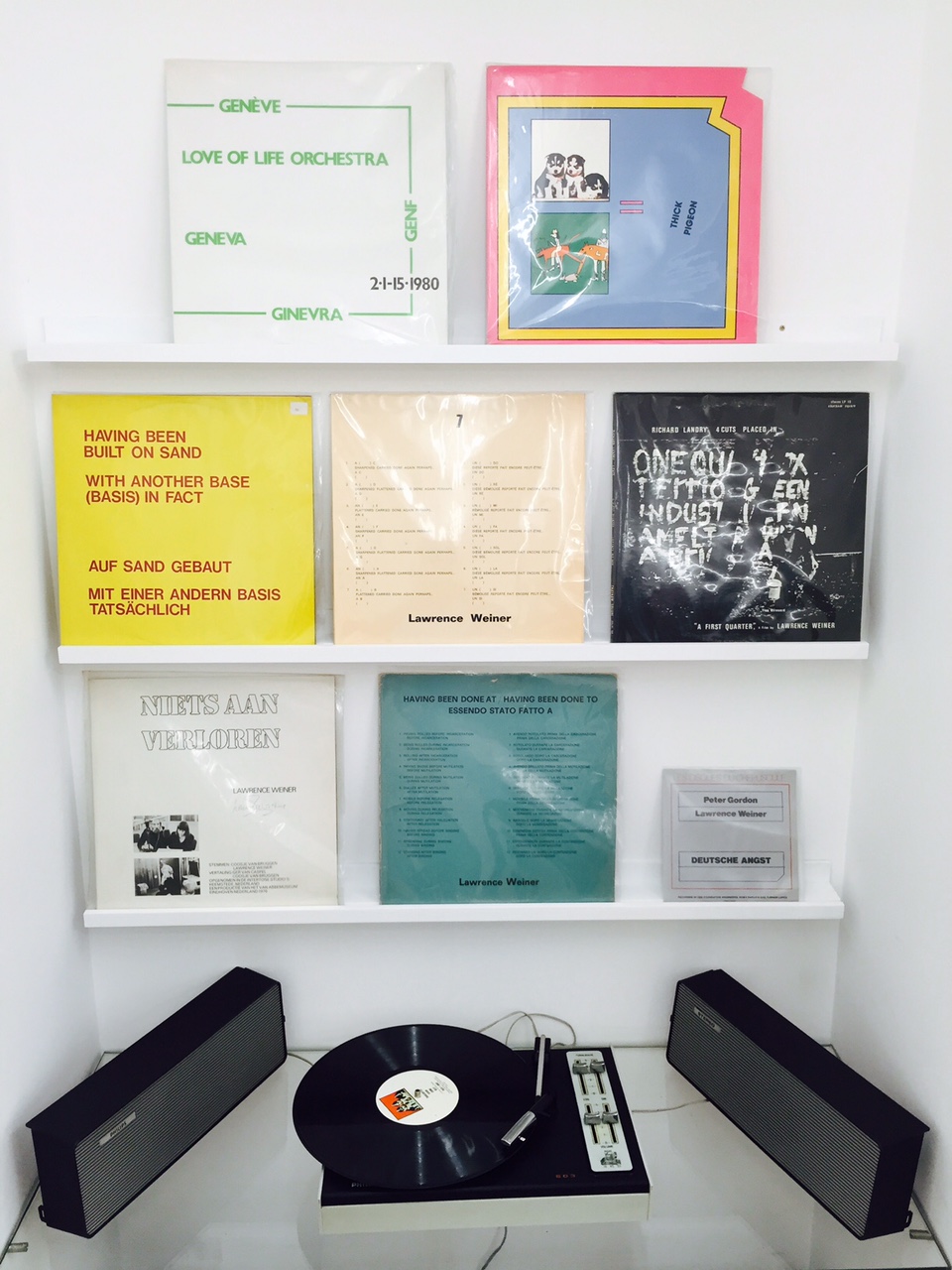
At Stake
Olivia Ardui, 2013
The exhibition brings together works that analyze and criticize the rules of the game and put them in check, that is, in a critical situation of impasse, which does not seem to present a solution or a way out. This is accomplished through the questioning of ideologies, official narratives of history, predominant philosophical and socioeconomic systems, geopolitical situations, and the very notion of time. The exhibition was curated by Olivia Ardui.
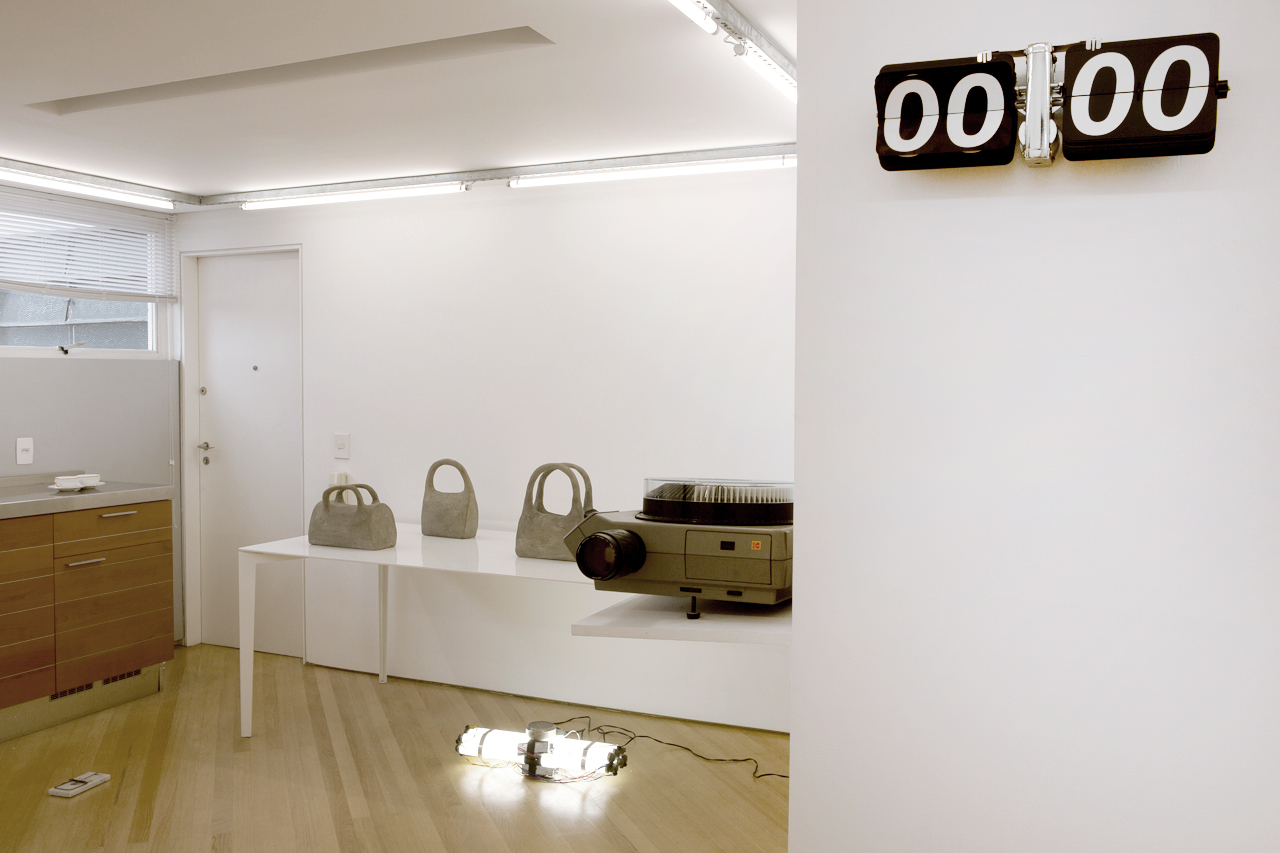
Geometries
Paulo Miyada, 2012
“Geometries” was the first exhibition of the moraes-barbosa collection. It occurred in 2012. Organized as a part of the collection, it favored works by young artists who explored geometric and cartographic resources. It included an essay specially written by curator Paulo Miyada based on the theme and the works exhibited. The exhibition took place in an apartment in São Paulo reserved by the cmb for residencies by international artists and curators and for experimental exhibitions with the collaboration of local curators.
